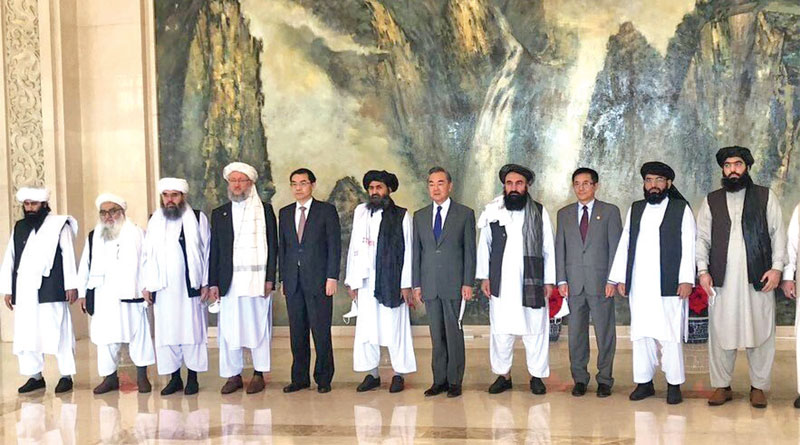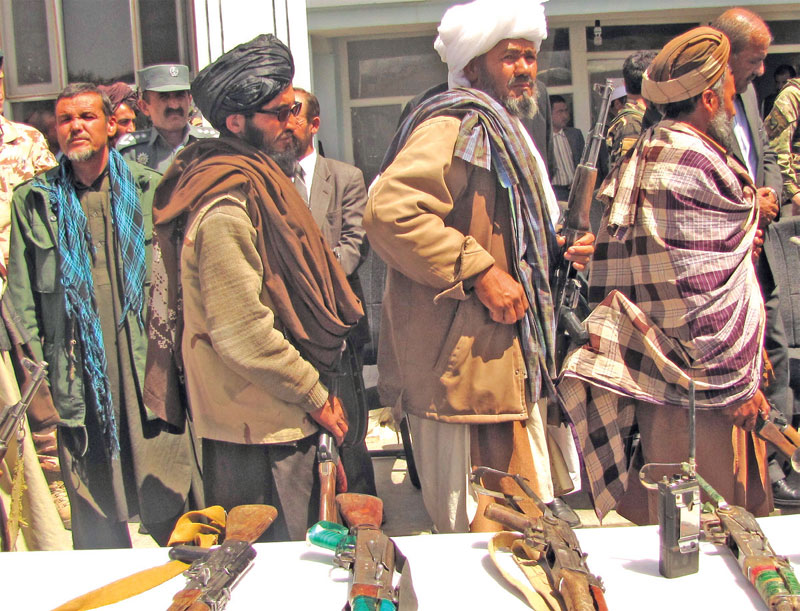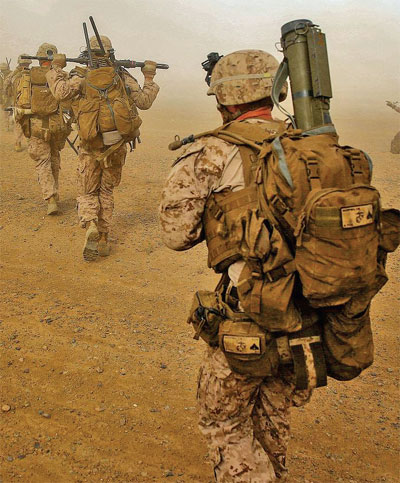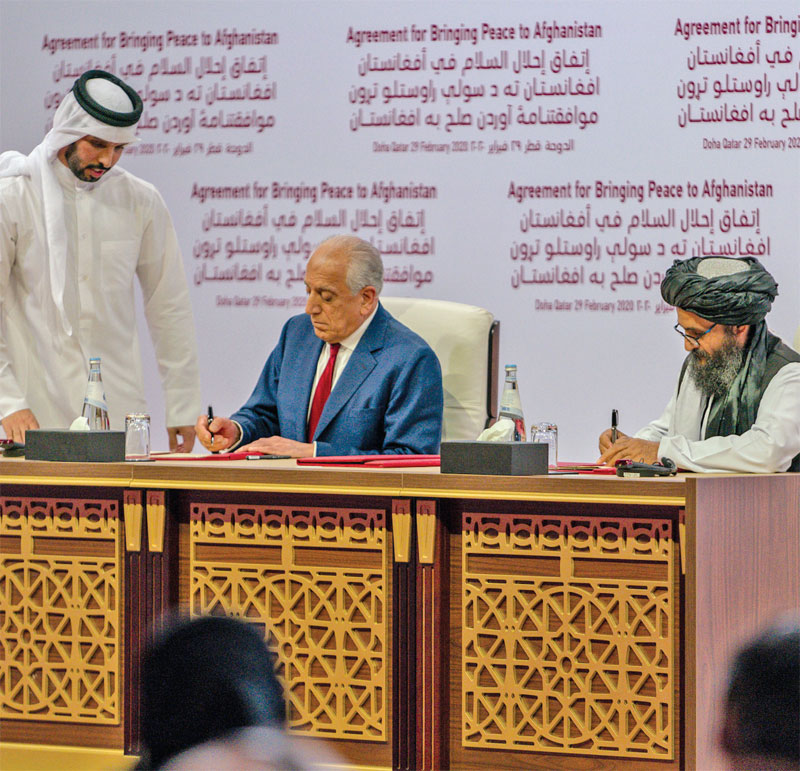While the nation reeled under the onslaught of Corona, multiple political and military incidents demanded attention. Here’s a look back at everything that hit the headlines this year
Smruti D

A Year of Shock & Awe
The US lost its longest war in Afghanistan 20 years after it invaded the country, located at crossroads of Central and South Asia in 2001. The Pashtun, Islamist fundamentalist group usurped the seat of power in Kabul in 1996. The US withdrawal came after President Donald Trump signed a Peace Agreement in February 2020 in Doha, Qatar. The Taliban in turn promised to not attack the US troops. According to the agreement, the Trump administration agreed on bringing the numbers of US troops down from 13,000 to 8600 by July 2020 and a complete withdrawal was promised for May 2021. The war that lasted two decades, as per the New York Times cost two trillion dollars.
After the Biden administration took over, the US decided it would retain 2,500 troops who were in Afghanistan by the time he took office in January. But by mid-April it was decided that the country would go for a complete pull out of troops. In May 2021, the US military accelerated the pace of its troop withdrawal. By the end of July 2021, the United States had completed nearly 95 per cent of its withdrawal, leaving just 650 troops to protect the US embassy in Kabul. While the deadline for pull out was initially set for September, the last of US troops left Afghanistan on August 30. The exit cost 180 Afghan lives and 13 US service members. The Taliban had been capturing and contesting territories across the country despite ongoing peace talks with the Afghan government threatening government-controlled urban areas and seizing several border crossings.
It was however in May that the Taliban aggressively began taking control. As August began, one after the other, several important cities including Kandahar in the south and Herat in the west came under the Taliban control. The first provincial capital to fall became the Nirmuz Province in the southwest followed by ten other capitals including other capitals, including Mazar-i-Sharif in the north and Jalalabad in the east. Kabul, the capital, and the only major city left finally fell on August 15. President Ashraf Ghani fled the country. It was a matter of surprise with the kind of speed the Taliban took control in Afghanistan. Intelligence agencies all over the world had anticipated a different time-period for Kabul and other major cities to get into the stranglehold of the Taliban.

More than 3,500 coalition soldiers have died since 2001, of which about two-thirds are Americans. More than 20,000 US soldiers have been injured. Tens of thousands of Afghans died in the span of twenty years and today, to go by the United Nations’ data, Afghanistan has the third-largest displaced population in the world. Of the trillions of dollars that the US spent in Afghanistan, nearly 83 billion USD were spent in ‘training and equipping’ Afghanistan’s Army. The speed with which the Taliban took rapid control in Afghanistan, showed that the Afghan National Defence and Security Forces (ANDSF) were not in the position to fight. At some places, to avoid bloodshed the Afghan Army stationed at outposts and in towns and the Taliban entered negotiations and surrendered, which majorly helped Taliban’s quick succession. This mainly came because the US Army practically abandoned the Afghan forces. Along with the US troops, eight thousand allied troops and eighteen thousand contractors that the Afghan forces depended to operate their air force and for logistical support also took flight, leaving the latter in a lurch.

Finally, the Taliban in September took the last standing bastion of resistance—the Panjshir valley.
Afghanistan was renamed ‘Islamic Emirate of Afghanistan’ and the Taliban announced an all-male government. Mullah Mohammad Hasan Akhund is the ‘acting’ Prime Minister in the new Afghan government, with Mullah Abdul Ghani Baradar and Mullah Abdus Salam being his deputies.
Despite its initial reluctance, India began backchannel talks with the Taliban in June, the ministry of external affairs (MEA) confirmed days after the development. In October, India met the Taliban envoy, on the side-lines of Moscow Format talks in Russia. India had expressed its willingness to provide humanitarian aid to the people of Afghanistan. In December, India sent medical aid to Afghanistan, a first consignment since Taliban took over to help the country’s deteriorating health situation. This comes even though India has not recognised the Taliban administration in Afghanistan and has urged the international community to proceed cautiously in dealing with the Taliban because of uncertain security guarantees and the outfit’s rigid position on human rights-related issues.
A Year of Diplomatic Wranglings
India-China: Tensions between India and China have refused to die down. If anything, problems only seem to be emerging in this area and amicable settlements between the two parties have not yet seen the light of day. The Corps Commander-level talks that the two countries were holding after clashes in Ladakh killed 20 soldiers of the Indian side have also come to a standstill. China also suffered an unspecified number of casualties, in the first combat losses for both countries on the border in 45 years.

The 13th round of talks happened in the aftermath of two significant events. A brief face-off between the two sides near Yangtse in the Tawang sector of Arunachal Pradesh nearly two weeks before the talks were held and there were indications of some ‘physical engagement’ among the troops. Close to 100 Chinese soldiers had also transgressed the LAC in the Barahoti sector of Uttarakhand on August 30. The Chinese troops returned after a few hours from the area guarded by the Indo-Tibetan Border Police (ITBP). The last round of talks reached a deadlock after Beijing accused Delhi of making ‘unreasonable and unrealistic demands.’ Delhi in turn blamed Beijing for not being ‘agreeable to its constructive suggestions’ as well as failing to provide any ‘forward-looking proposals’ in bringing to a halt the 17-month military confrontation in eastern Ladakh.
In November, India and China agreed to hold 14th round of talks but no further developments in this regard have taken place. ‘The two sides expressed that in accordance with the consensus spirit of the Dushanbe meeting between the two foreign ministers, they will continue to work hard to further ease the border situation and strive to shift from emergency response to normalised control as soon as possible,’ the Chinese foreign ministry statement said. The statement further added, ‘The two sides agreed to maintain dialogue and communication through diplomatic and military channels, actively prepare for the 14th round of military commander-level talks and make efforts to resolve the remaining issues in the western section of the China-India border.’ Each side currently has around 50,000 to 60,000 troops along the LAC in the mountainous sector.
In preparation for winters, China in September put up new modular container-based accommodations for its troops in several high-altitude forward areas on its side of the Line of Actual Control in eastern Ladakh. The shelters were installed in locations near Tashigong, Manza, Hot Springs and Churup among others.
You must be logged in to view this content.

